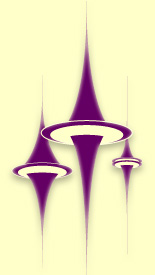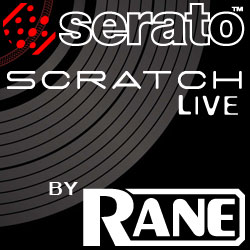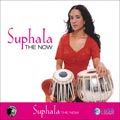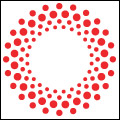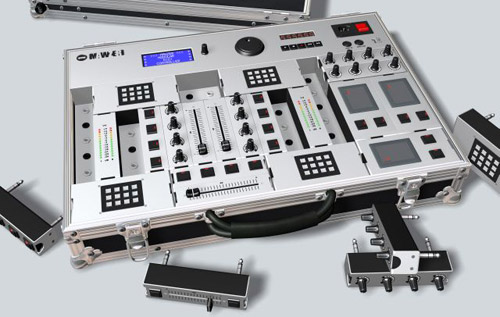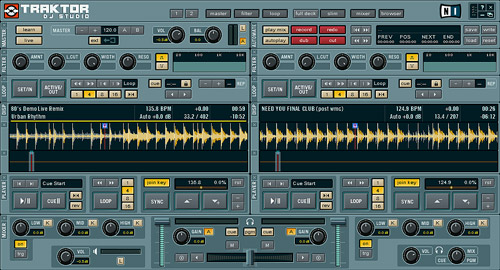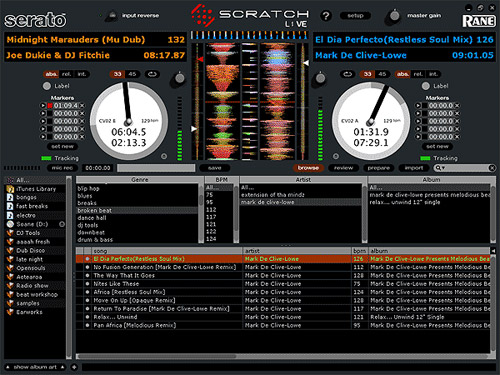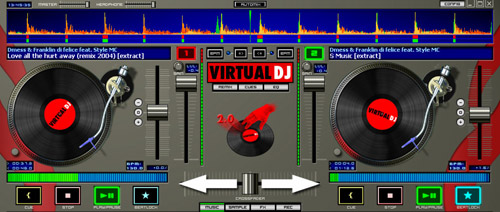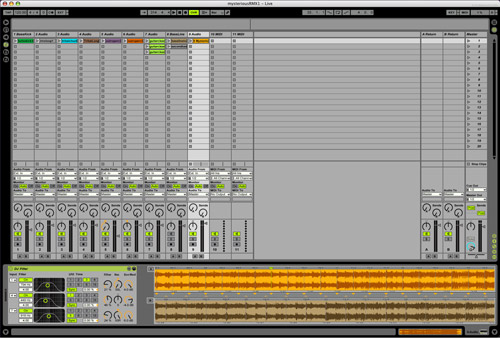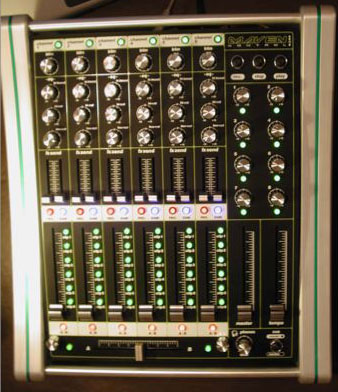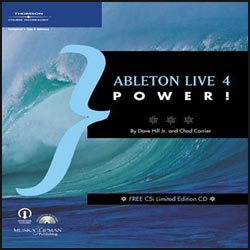|
|
|
|
|
|
|
|
|
|
|
|
|
||||||||||||||||||
 |
|||||||||||||||||||
|
|
|
|
|
May 16, 2005 ../ DJ Hardware Technology Eclipsing SoftwareMusic Trends May 2005The DJ hardware industry appears to be about 9 to 18 months ahead of the software offerings and this has prevented digital DJing from exploding into wide-scale adoption.The MusicMisse show at Frankfurt confirmed that the music hardware industry is far ahead of the software concerns in providing cutting-edge technology to mixologists around the globe. Two new significant launches by Allen & Heath and Mawzer (see pictures below) detailed how the hardware manufacturers' long term horizon is much more far-sighted then the leading software developers who have just attempted to duplicate the physical mixing experience instead of taking the model the next level.
Some companies have tried to develop dedicated controllers to make using the computer software fun and exciting. The best product right now is the EKS XP10 controller. It's a USB controller with a Pioneer CDJ-1000-like wheel and several additional buttons. The product comes bundled with its own Bison DJ software, but its still in Beta and very immature. However, you can use the XP10 with VirtualDJ and this is the best combo at the time of this writing. Each XP10 is a dedicated sound card with a high-output RCA stereo connection. By plugging in two XP10s into a DJ mixer, the user has a great solution for tactile mixing. Several hip-hop DJs have adopted this approach because the XP10's can be used for basic scratching. It still isn't instantaneous like vinyl, but if they can reduce the latency even further, it can be an effective portable solution. Allen & Heath demonstrated the Xone:3D at Frankfurt which is half DJ mixer and half software controller. The prototype was controlling Ableton's Live program and piqued the interest of many DJs sashaying through the exhibit (the unit was developed with Richie Hawtin who lent his expertise to the CNTL:92, a mixer with MIDI training wheels). Many were quite surprised at a product of this nature coming from the analogy Allen & Heath camp.
The takeaway from this is that the DJ software market is very much up to grabs. Without one killer app to inspire DJs to move over to the digital realm in droves, anyone can come in and take the industry by storm. In the next 12 months, the market is going to see some substantial new products and we'll outline a few of them here. Native Instruments should have version 3 of their Traktor software out by Christmas. Hopefully, they've learned from their past mistakes and will address several key deficits to make a serious impression on the industry. Version 3 should see at least four sources available with better sampling "pads", stacked waveforms, and hopefully much, much better effects. Native has been incorporating 5.1 surround sound features in their last couple of updates and hopefully this will make it into version 3. A dedicated hardware controller should be available in 2006 which could make using Traktor a seamless and entertaining experience. Serato's Scratch Live will probably be updated by the end of the year. This sleeper product out of the Rane camp could move the industry decidedly forward with more innovations, effects and even tighter control. An all-in-one mixer/controller solution from Rane's hardware division would make a lot of sense and broaden the Serato's reach. This seems likely. Rane recently released the one unit rack mount MP-4, a new unit that nicely integrates analog and digital mixing into a single DJ rig, demonstrating that they're already thinking about a comprehensive solution. In addition, Serato has been a big hit for Rane and it make sense that they would focus on this profit center with more ancillary products.
However, the real money is on Ableton. With updates to Live coming fast and furiously (every 9 months or so), Live 5 could surprise everyone by incorporating significant mixing tools to make the product much more DJ friendly. Stacked waveforms, an updated DJ-oriented GUI that would showcase all mixing attributes on one screen (including effects), the ability to needle-drop on the fly, 5.1 surround sound options, and advanced beat-oriented processing specifically designed for mixing would make this product a category killer. With its substancial remix and production muscle, Ableton Live could also own the DJ software vertical by making the learning curve to a DJ interested in dipping their toe into production, worth the investment. Sasha, a high-profile DJ who has gone entirely over to digital mixing via Live, has pretty much lifted the stigma of using a laptop to mix opening the club doors for DJs who are both new to the digital game, as well as those who have been on the computer mixing bandwagon for some time.
The Future: Rocky! Rocky! Rocky!
Copyright © 2005 Futuremusic® All Rights Reserved. |
|
|
Trends Counter-PointIf DJ software is so far behind DJ hardware, then how come Sasha developed his own hardware controller to work with Ableton Live?Good question. There are two valid reasons... First off, he has the resources to do so. There are many viable MIDI controller solutions for Live including hardware from M-Audio, Evolution, FaderFox, etc. which work just as well as Sasha's Maven for the average DJ. According to Sasha, his decision to build his own controller came about from using Ableton's Live to produce his recent Involver CD. Using Live to both remix his own tracks and then mix the songs within one program opened his eyes up to the possibility of using the software for his DJ sets. At first, he played his DJ sets using an Evolution UC-33 controller and a M-Audio Firewire 410 external sound card. However, he found that the combo came up wanting in terms of how he wanted to mix. So when you're making 5 figures to DJ, you can spend a few bucks to develop your own. If I was a hardware manufacturer, there's no doubt that I would certainly try and woo Sasha to a R&D position in my company. The fit and finish on his Maven is first rate.
Sasha is currently working on a new version of his Maven controller. Based on his experience with the first prototype, he's incorporating several new ideas to take his mixing even further. The Special Edition of Sasha's Involver is out now!
Now Experiments In Sound has become The Ultimate Mix Contest...
After the tremendous success of our groundbreaking The Next Big Thing DJ Contest, Futuremusic has decided to once again create a new paradigm...
Futuremusic wants to thank everyone who participated in The Next Big Thing 2004. John Digweed, Beatport, Alienware, M-Audio, Native Instruments, IK Multimedia, PVDJ, PK Graphics, Ableton, The DubHouse, Propellerheads, Technics, FreeFloat, The Church, PCDJ and every DJ who entered this year's event thank you. From the sheer number of quality mixes, we can tell you that dance music is thriving in the United States. The amount of outstanding talent and creativity really blew us away, and every DJ who's putting their heart, mind and soul behind the music is a winner. John Digweed has made his decision and the winner is... Think you got skills?? Then start practicing! The Next Big Thing 2005 will kick off at the end of the summer!!
News Archives
|
|
|
|
|
|
|
|
|
|
|
|
|
